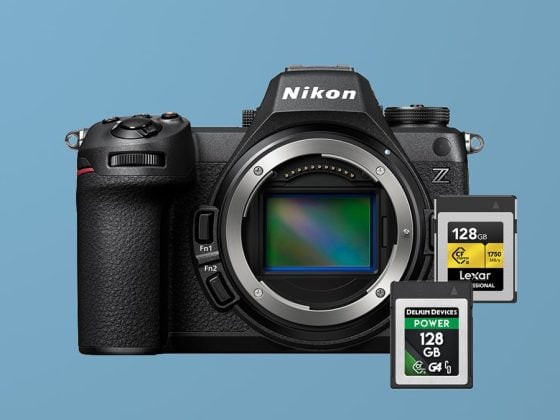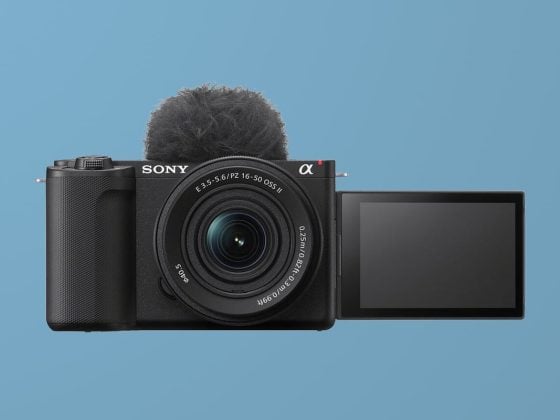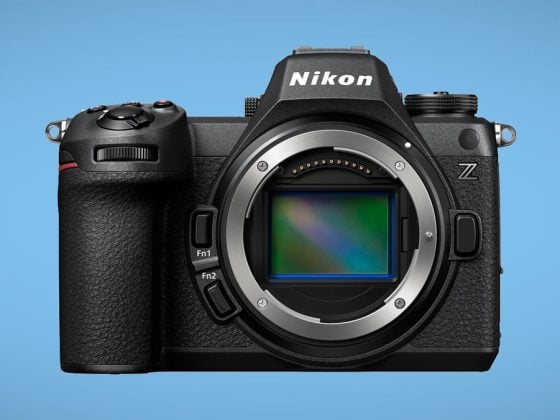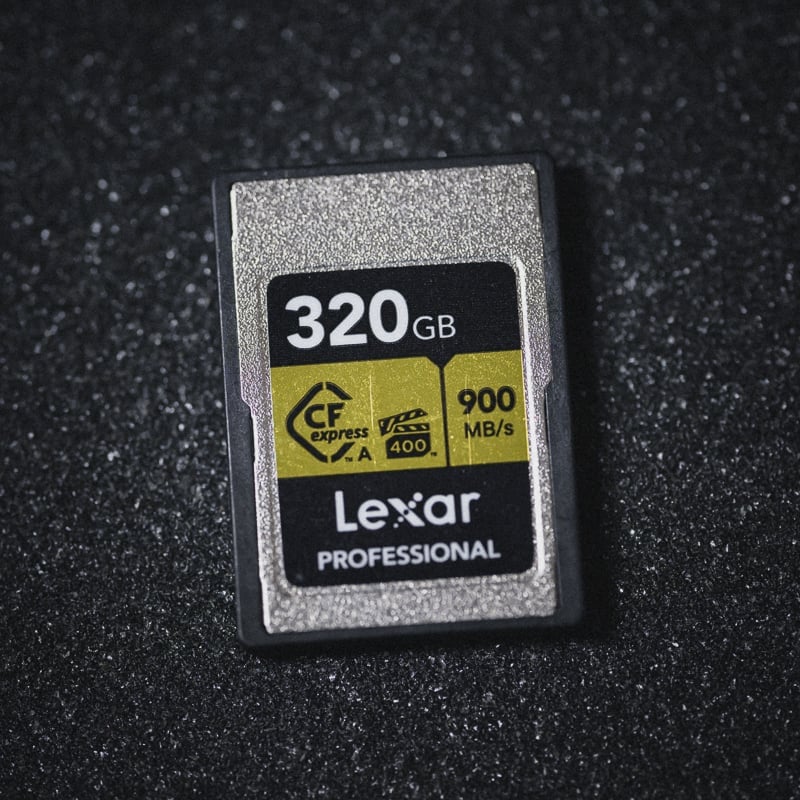
CFexpress has emerged as the go-to memory card format for most professional cameras today, coming in two popular formats: CFexpress Type-A and CFexpress Type-B.
Not only have CFexpress cards surpassed V90 UHS-II SD cards in speed and performance, but they can sometimes even be found at a better price. However, CFexpress 4.0 bridges this performance gap even further.
This article will explore benchmarks and why these cards are worth your attention.
CFexpress Type B vs. Type A
Before we delve into the specifics of CFexpress 4.0, let’s clarify the difference between Type B and Type A:
- CFexpress Type B CF4.0: These cards offer blazing-fast speeds, utilizing two PCIe lanes for a theoretical maximum of 4000MB/s data bandwidth. They are the most common and widely supported format.
- CFexpress Type A CF4.0: Smaller size, Type A cards use a single PCIe lane, providing a maximum of 2000MB/s data bandwidth. While currently limited to a few cameras (such as the Sony A7 IV, A1, and A7S III), they are not as prevalent as Type B cards. However, their small size makes them a great choice for smaller cameras, although they are typically priced higher than CFexpress Type-B cards.
The New CFExpress 4.0 Cards
The landscape has shifted with the advent of USB 4.0 and CFexpress 4.0. Here are some key points about the latest CFexpress 4.0 cards:
- Performance: CFexpress 4.0 cards far exceed the write speeds that the current cameras require.
CFexpress Type-A is capable of 2000MB/s
CFexpress Type-B is capable of 4000MB/s
CFexpress Type-C is capable of 8000MB/s - Compatibility: Older cards benefit from increased bandwidth when connected to USB 4.0 readers and cables, but the real game-changer lies in future-proofing. These cards ensure you’re ready for upcoming camera models with PCIe Gen 4 hardware. You will, however, need a camera and computer with this latest hardware to take advantage of this performance.
CFExpress Type-B CF4.0 BenchMarks
I have many new CF4.0 cards and have started running benchmarks to see if their performance gains are worth it.
For these benchmarks, I’m using the AJA System Test on a Windows 11 machine with a USB4.0 motherboard and the Prograde CF4.0 readers.
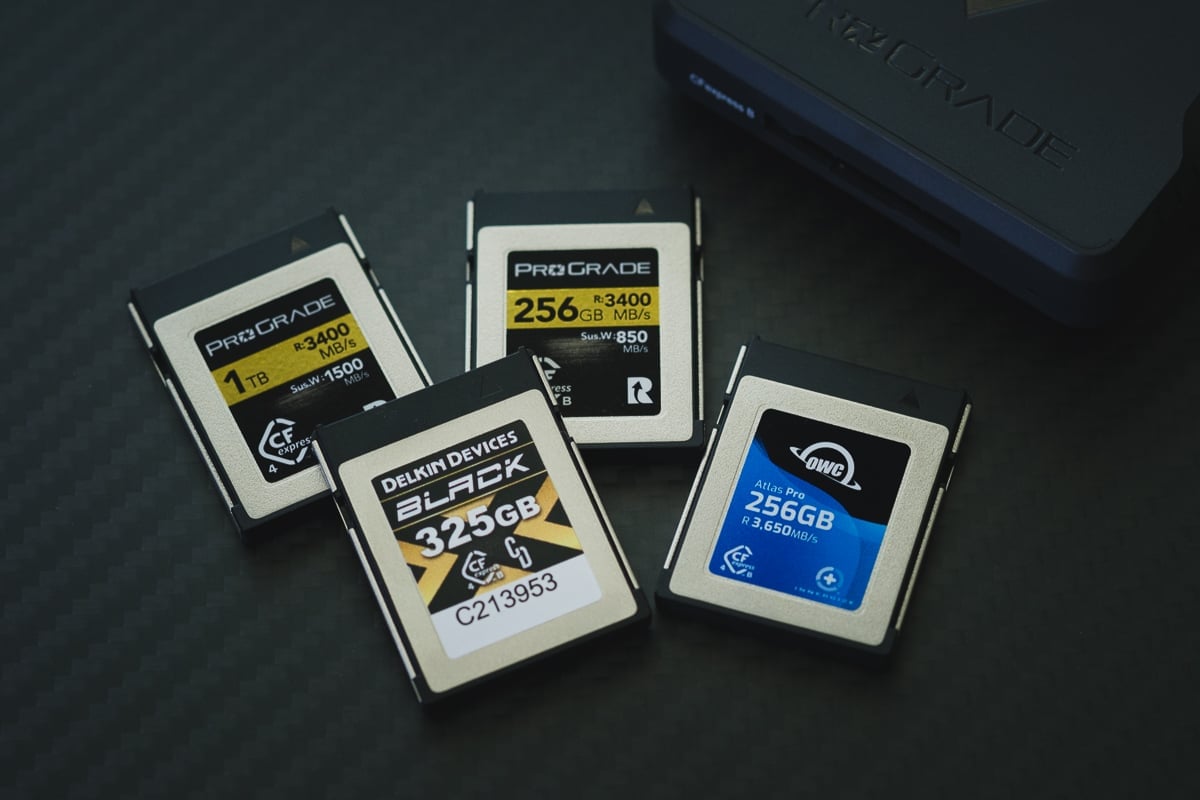
| Memory Cards | Write Speeds | Read Speeds | Sustain Speeds |
| ProGrade Gold 256GB/512GB CF4.0 | 1470 MB/s | 2713 MB/s | 822 MB/s |
| Delkin Black 325/650GB CF4.0 | 1498 MB/s | 2202 MB/s | 1501 MB/s |
| OWC Atlas Pro CF4.0 256/512GB | 1377 MB/s | 2667 MB/s | 762 MB/s |
A Few Issues I was Having With This USB 4.0
You may have noticed that the CFexpress Type-B cards are not hitting anywhere near their rated USB 4.0 Write Speeds in the above benchmarks.
I had a few issues with my computer and the Prograde CF4.0 Type-B reader that I’m still working out. If I use the CFexpress USB 4.0 reader on the CFexpress Type-B cards, I only hit speeds of around 700MB/s. I have to change to a USB 3.2 2×2 port to get the write speeds you see here. I’m unsure if it’s an issue with my computer or a defective reader. I use the Asrock z790 Motherboard, which has all the USB4.0 features enabled in the bios. Eventually, I’ll probably update my Macbook Pro for USB4.0, which may solve the problem, or try another reader from another brand.
Be sure to double-check the Prograde reader to see if you have a new PC build, and let me know if you have the same issues as I do. I don’t want to blindly replace my reader if it’s not confirmed defective since they are expensive.
CFExpress Type-A CF4.0 Benchmarks
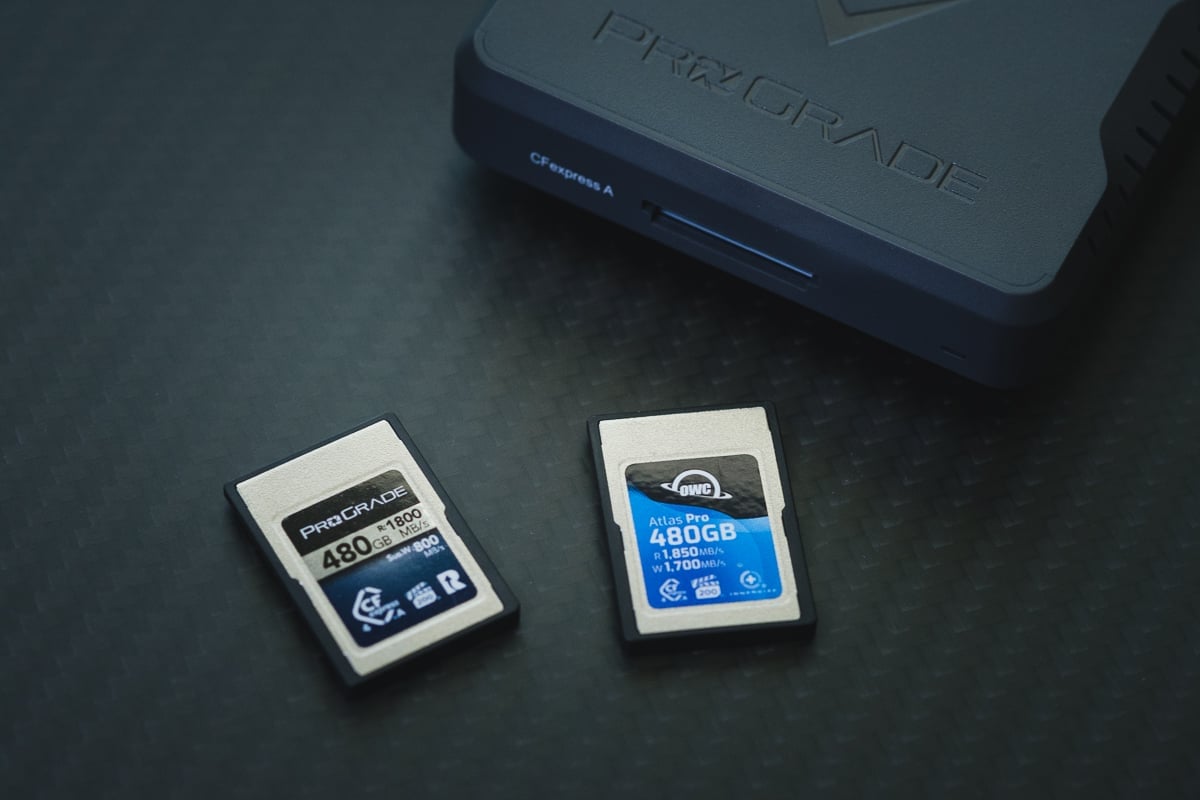
| Memory Cards | Write Speeds | Read Speeds | Sustain Speeds |
| ProGrade Iridium 480-960GB | 1272 MB/s | 1532 MB/s | 687 MB/s |
| OWC Atlas Pro 480/960GB | 1275 MB/s | 1535 MB/s | 692 MB/s |
With the Prograde CFexpress Type-A USB4.0 reader, I am getting decent speeds, although nowhere near the rated speeds yet. This could potentially be solved with a better cable or a new motherboard. This tech is new, so there is still much to work out.
Is It Worth It?
Absolutely! If you’re in the market for a new CFexpress Card and the price isn’t out of reach, grab one of the new CF4.0 cards. If you prioritize performance and want a card that will keep you future-proofed, CFexpress 4.0 is the way to go. While they come at a slightly higher price, the investment pays off in speed, reliability, and compatibility with upcoming camera technology.
Remember, CFexpress 4.0 is an investment that should last you a while, as I can’t imagine needing more than 2,000 MB/s from a camera any time soon.
There is one caveat. If you’re a videographer or cinematographer, you should still prioritize a card with a high sustain speed over CF4.0 burst read and write speeds. Sustain speeds are limited by the type of flash used, not by the interface and memory controller. As you can see from the benchmarks above, the Delkin CFexpress Type-B card shows almost double the sustained speed compared to the OWC and Prograde cards. In this use case, I would even grab a CF2.0 card over a CF4.0 card if it has a higher sustain speed.
These links will take you to all the CFexpress Type-A and CFexpress Type-B benchmarks to compare.
| **This website contains affiliate links. We will earn a small commission on purchases made through these links. Some of the links used in these articles will direct you to Amazon. As an Amazon Associate, I earn from qualifying purchases. |

